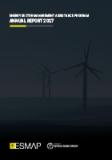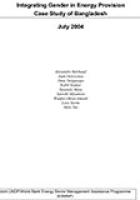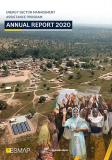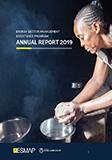Publications
Integrating Gender in Energy Provision Case Study of Bangladesh
The objectives of this study were to collect and analyze evidence to present a rationale for integrating gender into energy programs, examine the complexities involved, and propose some analytical tools, resources, methodologies, and guidelines that can assist in addressing them. The main findings are that frameworks for gender planning and their practical implications are not well understood, and coordination between energy and gender specialists is weak.
Nevertheless, the report finds that direct and indirect benefits can and do accrue to women and society from integrating a gender dimension into energy-related interventions.
Users also downloaded
December 31 2017



